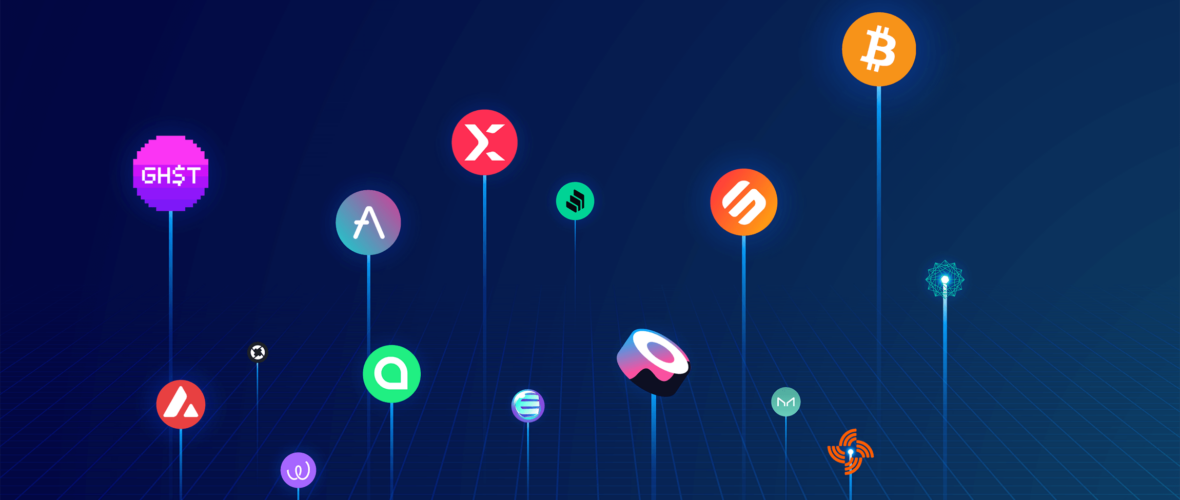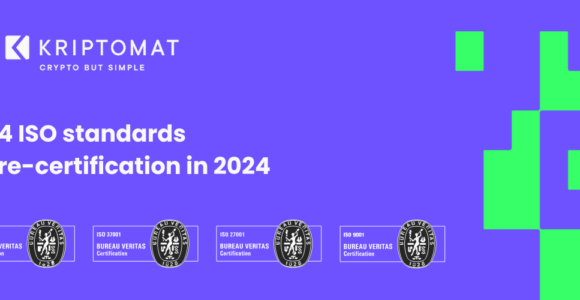At the heart of the crypto revolution is a vision of using digital assets as freely and conveniently as we use cash and credit cards. Believers look forward to a day when merchants accept crypto universally and routinely.
In the crypto community, that vision has a short title: “Buying a cup of coffee with Bitcoin.”
It ought to be possible. At current exchange rates, you’d need about 5,000 satoshis to buy a cappuccino that sells for two euros.
But you can’t buy a cup of coffee with Bitcoin, and it’s possible you’ll never be able to.
The café would need to adjust its prices day by day, maybe even hour by hour, as the value of Bitcoin rises and falls.
And what if the café bought its coffee beans when Bitcoin was significantly more or less valuable than the day the beans are ground and served up as coffee? The manager might have to adjust coffee prices based on the present value of the café’s inventory.
The café is unlikely to be able to predict how many Bitcoins it must set aside for paying its lease and utility bills. And what about employees? If every paycheck delivers the same Bitcoins, their purchasing power is going to vary week by week. If the paychecks are adjusted based on the trading value of Bitcoin, then why not just give them euros?
The problem with “Buying a cup of coffee with Bitcoin” is that crypto prices are volatile. They change a lot and they change quickly compared to the government-issued currencies we are accustomed to using. With euros or pounds, a café might adjust its prices once or twice a year to account for inflation and other economic developments. With crypto, bigger price changes would have to happen much more often.
It would probably make the most sense for the café to use a smart app to set the price of each cappuccino it sells individually based on market conditions, inventory levels, and the cost of running the business. You might pay more or less than the person standing next to you in the queue. And you’d never be able to predict what your coffee would cost you.
It is this commercial indeterminacy that has led entrepreneurs to develop stablecoins.
Stablecoins are cryptocurrencies without the price swings. Their value (compared to American dollars, for example) doesn’t change over time. If your cappuccino costs $3, you can pay for it with three stablecoins.
Stablecoins offer many of the benefits of other cryptocurrencies and don’t suffer from the volatility that has made crypto a thrilling roller-coaster ride for investors and a non-starter for most retailers.
How Stablecoins Work
Most stablecoins are “pegged” to the value of a fiat currency – usually the U.S. dollar. The issuer maintains a reserve stock of dollars: one dollar for each $1 coin. The price remains constant because the issuer who creates the coins will buy and sell them for $1 each.
In the real world, stablecoin prices can and do vary from associated fiat prices by one or two percent. But stablecoins do not suffer from the extreme volatility that makes it difficult to use crypto for everyday purchases.
Although the crypto world’s current cryptocurrencies are most often pegged to the U.S. dollar, some use other approaches. Stablecoins can be pegged to any fiat currency. They can be pegged to commodity prices or the value of index funds. They can even be calculated algorithmically.
In each case, the goal is the same: to deliver the benefits of blockchain-based digital assets in a currency that isn’t afflicted by a high degree of volatility.
Fiat-Backed Stablecoins
Cryptos secured by fiat currencies include Tether, widely acknowledged as the first stablecoin. Tether is pegged to the U.S. dollar. For a time in late 2020 it was the most widely traded cryptocurrency in the world.
Stablecoins pegged to fiat currencies maintain a reserve of the currency to use as collateral and secure the value of the coins. Reserves are typically administered by independent custodians and subject to regular audit.
Although the value of the reserve should theoretically exactly match the value of the issued coins, Tether has admitted that its reserves cover most but not all of the coins it has issued. Barring a run on the cryptocurrency, that reserve is sufficient to secure and stabilize the value of users’ holdings.
Commodity-Backed Stablecoins
Stablecoins don’t have to be pegged to the value of government-issued currencies. They could also be based on the value of gold or index funds consisting of multiple commodities.
Commodity-backed stablecoins include Tether Gold, Asia Broadband, Australia’s Perth Mint Gold, and Dignity Gold’s DIGau. Holders of these stablecoins are guaranteed an opportunity to exchange their coins for gold or other commodities.
Other commodity-backed stablecoins include Tiberius, which is backed by a combination of seven precious metals and SwissRealCoin, which is pegged to the value of a portfolio of Swiss real estate.
Crypto-Backed Stablecoins
It is possible to collateralize stablecoins with other cryptocurrencies. In that case, the coin’s value might be pegged to the euro, but the reserves would be held in cryptos.
Let’s say there’s a stablecoin whose value is one euro and it is backed by Bitcoins. That means you could always redeem the coin for a euro’s worth of Bitcoin currency.
In order to securely back the coins, the issuer would have to maintain a reserve of Bitcoins that is substantially larger than the value of issued coins. That way, if the value of Bitcoins dropped, the issuer could still buy back all the issued stablecoins with Bitcoins.
It seems complicated, but Maker’s Dai stablecoin actually works that way. The value is pegged to the U.S. dollar and the reserve is made up of Ether coins locked up in smart contracts.
Algorithm-Backed Stablecoins
In 2014, a computer scientist named Robert Sams published a research paper suggesting that a stablecoin could be pegged to a fiat value and backed by intelligent software that bought and sold crypto assets in order to maintain a sufficient reserve.
The paper garnered a lot of attention and has served as the inspiration for Basis, a stablecoin whose first iteration was shut down by the U.S. Securities and Exchange Commission after its initial coin offering raised more than €113 million. Basis bounced back and it is going strong today.
Trading Strategies for Stablecoins
At first blush, it makes no sense to invest in stablecoins. If you invest €1,000 in a euro-pegged coin, at the end of 10 years your investment will be worth €1,000. Most investors prefer a return higher than 0 percent – though in the volatile world of crypto investing, 0 percent is sometimes an improvement.
But there are still good reasons to purchase stablecoins.
First, stablecoins are a simple means of transferring funds from one crypto exchange to another. If you want to make purchases on an exchange and you can’t fund your account with your country’s native fiat currency, a stablecoin could be the solution.
Stablecoins are useful for people who live in countries with unstable fiat currencies. When a local economy is struck by hyperinflation, citizens rush to purchase dollars or euros. Unfortunately, local banks run out of foreign currency, and it can be difficult to qualify for an account to purchase foreign currencies online. Stablecoins are a great solution. If your local currency is experiencing inflation, transfer your savings to a cryptocurrency that’s pegged to a more stable fiat currency.
You can also lend stake stablecoins at some exchanges, or just hold them and earn interest. That’s like buying a Treasury bond except that the term is usually much shorter and the interest rates are generally higher. Stablecoin owners have earned 25 percent or more by lending their holdings to liquidity pools.
You can add a stablecoin to your crypto portfolio to minimize the risks of volatility. You can be sure that some portion of your investment will not lose value.
Finally, a stablecoin can serve as the cash account for crypto investors. Stock market investors find cash accounts handy.
Here’s how it works. Suppose you own one Bitcoin and the value suddenly rises to €100,000. If you think there’s nowhere to go but down, you can swap your Bitcoin for a stablecoin to keep the funds safe. When Bitcoin drops back to €75,000, you can purchase a Bitcoin and keep the difference. When you start, you own 1 BTC. When you finish, you own 1 BTC plus €25,000 worth of stablecoins.
3 Stablecoins You Can Buy Right Now at Kriptomat
Stablecoins can make an important contribution to your crypto portfolio. There are many stablecoins in the crypto world. Here are three you can buy at Kriptomat.
Tether
Launched in 2014, Tether’s USDT coin is pegged 1:1 to the U.S. dollar and collateralized by a reserve of dollars. The Tether coin is the most widely used and held stablecoin.
Initially, Tether tokens were minted on the Bitcoin blockchain via the Omni Layer protocol. Today, USDT can be issued on many blockchains, including Bitcoin, Ethereum, EOS, Tron, Algorand, and OMG Network. USDT can be used like any other currency or token on supported networks.
Tether coins are supported by collateral funds: U.S. dollars that are held in reserve accounts. Tether made headlines when it ran afoul of the New York state attorney general, which accused the company of failing to disclose important information to coin holders. Since then, it has become more transparent about the funds that provide collateral for USDT.
Dai
The Dai stablecoin is part of the Maker Foundation’s Maker ecosystem. Dai is administered and secured by MakerDAO, a blockchain-based decentralized autonomous organization made up of Dai stakeholders.
Dai is pegged 1:1 to the U.S. dollar. MakerDAO maintains its value by locking other crypto assets in smart contracts via the Maker Protocol. Users who lock crypto in Maker Protocol smart contracts can borrow Dai coins against their collateral.
The Maker Protocol is an open-source project created in 2014 as a decentralized answer to controversial centralized stablecoin protocols. Unlike centralized stablecoins, which are minted by private companies, Dai tokens can be minted by any user by staking collateral using the Maker Protocol.
Reserve Rights
Launched in 2019, the Reserve Stablecoin (RSV) is one element of a three-part financial ecosystem. In addition to its algorithm-based stablecoin are the Reserve Rights utility token (RSR) and a selection of other cryptocurrencies that are held as collateral to back RSV stablecoins.
Every Reserve stablecoin is backed by cryptocurrency held in reserve. Because the reserve is subject to crypto volatility, Reserve’s algorithmic backing system monitors the price and acts accordingly. When the price of the RSV stablecoin falls, Reserve purchases RSV, diminishing the available supply and boosting the value. When the price rises, RSV owners sell their holdings, which increases supply and reduces the price.
RSV is backed by a reserve of tokens that are collateralized by U.S. dollars. Whenever the stablecoins are sold, the payment is converted to collateral. This helps the system stabilize the crypto’s price in the face of supply-and-demand economic pressures.
Other Stablecoins
The crypto world includes hundreds of stablecoins. The top-ranked stablecoins in terms of market capitalization are Tether, USD Coin, Binance USD, Dai, TerraUSD, TrueUSD, Paxos Standard, Reserve Rights, HSD, and Neutrino.
Although the coins use different technology to achieve stable prices, they deliver similar benefits. Stablecoins may well deserve a place in your crypto portfolio.
FAQ
Here are some of the most commonly asked questions about stablecoins.
How Can I Buy Stablecoins?
The easiest way is to use the Buy function here at Kriptomat. Prompts will guide you through the process and transfer stablecoins into your account in minutes.
Why Do Stablecoin Prices Change?
Stablecoin prices vary temporarily by one or two percent according to supply and demand. Studies have shown that prices are more commonly higher than the pegged value than lower. The fluctuations tend to even out over time.
Do I Need a Stablecoin Wallet?
The stablecoins you hold at Kriptomat are held in secure offline wallets for your protection. You are welcome to set up an external wallet, but Kriptomat uses enterprise-grade security, white-hat attacks, and other measures to keep your funds safe. In May 2020, following an independent audit based on 114 criteria set by the International Organization for Standardization, Kriptomat became the first European cryptocurrency exchange to receive ISO/IEC 27001:2013 certification for information security.
The Bottom Line
Stablecoins may not at first seem like an appealing investment, but they can play an important role in building a crypto portfolio. And they represent an essential step toward the dream of buying a coffee with crypto.
NOTE
This text is informative in nature and should not be considered an investment recommendation. It does not express the personal opinion of the author or service. Any investment or trading is risky, and past returns are not a guarantee of future returns. Risk only assets that you are willing to lose.




 IOS
IOS Android
Android